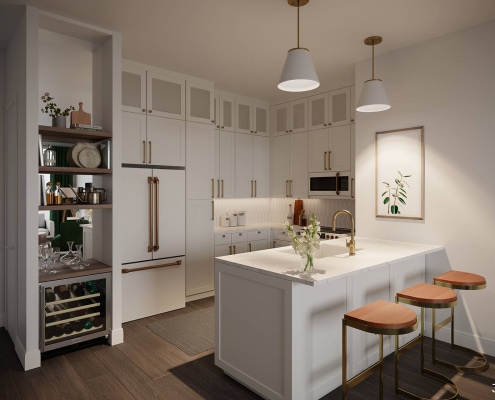Is a 3D Virtual Tour Necessary?
Reaching out to your customers virtually is vital these days. For real estate developers, architects, and interior designers, having the right visuals can make or break your project. In many cases, 3D renderings have been the answer for decades. But what makes a 3D virtual tour better than a 3D rendering?
What are 3D Virtual Tours?
Let us start by clearly defining a virtual tour. It’s not VR. It’s not animation. It is a sequence of 360-degree images stitched together and allows your customer to move from one image to another. The customer can see from any angle they wish and has the flexibility of viewing the tour on any computer device (i.e. smartphones, laptops). One of the most popular virtual tours out right now uses the Matterport scanning technology on existing homes – but that is changing quickly with smartphones. 3D virtual tours are similar but the content is created in a 3D environment.
Is a Virtual Tour Better than a 3D Rendering?
Technically speaking not always. For individual spaces (i.e. bedroom, kitchen, etc.) we recommend staying with 3D renderings due to their limited space. When showing a multi-room space or an entire area, a 3D virtual tour helps tell the story easier than multiple 3D renderings. In many cases, we create both since the 3D spaces have already been built. Renderings introduce customers to the development (i.e. email newsletters, print magazines, social media feeds) while 3D virtual tours help explain the project during the customer exploration process.
Do Virtual Tours Offer a Better Customer Experience?
According to an ICAP Framework study, customers rate of retention from an interactive 3D virtual tour is anywhere from 30% – 75% compared to 10% reading / scanning a 3D rendering. Customers also choose what they want to see and get a more complete picture of the project since they are not locked into a specific view. Depending on the virtual tour software, additional information can be displayed to guide customers along their interactive experience.
Virtual Tour Growth
According to Exploding Topics, interest in Virtual Tours has accelerated after the COVID-19 Spike. While the data may need more time, the interest level (shown at the end of 2020) in virtual tours is more than any other time in this chart’s 5 year history.
Are 3D Virtual Tours Expensive?
If you view as a line item compared to a 3D rendering, it is. When comparing to the time you save in getting a sale and governmental approvals, virtual tours are very affordable. In addition, costs are almost always covered as 3D renderings / virtual tours solve construction issues, furniture and paint selection before the project begins. Bottom line is that you are either going to pay the cost in 3D renderings or the mistakes made throughout the project build.
Do We Need 3D Virtual Tours?
If your development has plenty of time and needs little explanation (i.e. extension of an existing home), virtual tours and 3D renderings are overkill. In addition, including virtual tours solely in your marketing will not sell your development. Customers need to see something physical to reassure them that the virtual tour is close to the final product. Along with 3D virtual tours, having proper marketing and presentation materials to address your customers common questions will give you the advantage to making the sale and develop quick governmental approvals.





